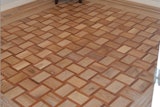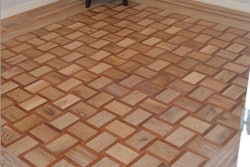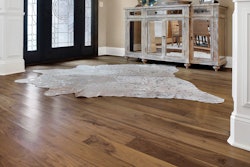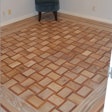Q: I’m seeing many kinds of joint systems integrated into factory-finished engineered products. Is one design better than another? Is one design easier to install compared with the rest?
A: During the 30 years I have been in this industry, it never ceases to amaze me that it does not matter how dramatically things seem to change, they always seem to stay the same. That statement holds true when it is applied to hardwood flooring, including the way it is fastened together. No matter which type of joint being sold, installers and retailers need to feel confident at the end of the day that the product will perform. Let's face it, nobody wants that call from Mrs. Jones complaining about her hardwood flooring coming apart.
Types of Joints
The most commonly used joint design has been around since the advent of hardwood flooring as we know it: a simple tongue and groove designed to be nailed, stapled, glued together (floated) or direct-glued down to the subfloor. A new joint design—the glueless plank joint—has become popular in the industry in the past five years. In many ways, the consumer is driving the demand for this product, and yes, it is contributing to the increase in DIY sales and installations.
Looking at the different types of glueless joints available, you will find that there are basically two design types. The first is variations of "lift-andclick;" the second is the "snap-together" joint. In general, you will find that the lift-and-clicks have thin and wide clicking joints, and the snap-together joints have one or more locking grooves. With both types, the manufacturer dictates the specs for the joint.
Is one joint design better than the other? This is a matter of opinion and depends from whose perspective you are judging. The traditional joint is more widely accepted than the glueless joint and is viewed by many in the industry to be superior, but I find exception to this. Through experience, I have found that glueless joints perform as well or better than a traditional joint and that the strength of the joint is not compromised dramatically by being glueless.
Installation
There is a lot of truth connected to the following statement: "If installers do not like the way a product installs, that product is potentially doomed." It is generally true if the word gets out in the installation ranks that a product is difficult and timeconsuming to install, there will be push back from the installer to the salesperson and a good chance that the salesperson will not endorse the product. Glueless joints were designed with ease of installation in mind. I would venture to say that for this reason alone, DIY sales have increased among the glueless products.
Both types of glueless joints are designed to be installed quickly and easily, but you can encounter potential difficulties with both joint designs depending on the layout. Both designs install quickly when starting a room and within the field of a typical room, but if the room contains many doorways, the lift-and-click design will take more time to install under and around the door casings. Having to lift the product up to engage the locking mechanism does not allow the installer to properly place it under door casings. The locking mechanism on the joint must be removed, and the joint then needs to be glued after it is put into place under the door casing. The snap-together design can be fitted into place under the door casing and snapped together without having to alter the joint. I strongly recommend reading the manufacturer's installation instructions. I receive calls every day from installers and consumers who are in trouble because they simply did not take the time to read the instructions.
Endurance
Time will tell when it comes to glueless joint endurance; many of the earlier joint designs have already been redesigned and improved upon. As with any type of joint, it is not uncommon to see changes within the joints with the change of seasons. Winter months may bring slight gapping and summer months may create slight swelling. This is to be expected; after all, we are talking about a wood product.
It is safe to say that as manufacturers, we are always looking for a better and improved product. I am confident in saying that we will also continue to search for a better joint. Factory-finished flooring was designed to make hardwood flooring easier to buy and install. The joint is just one component of the product that can help enhance the ease of sales and installation.

































